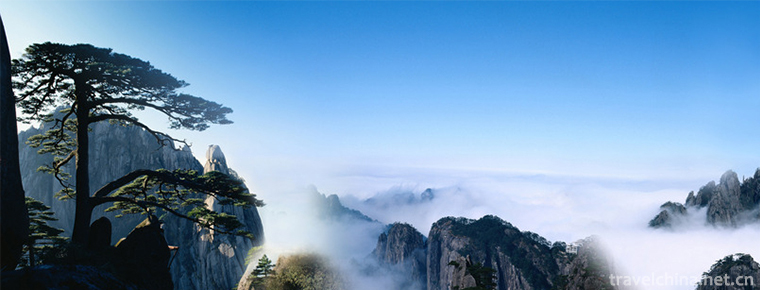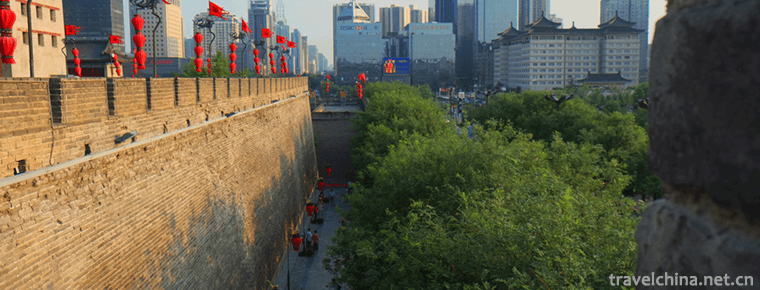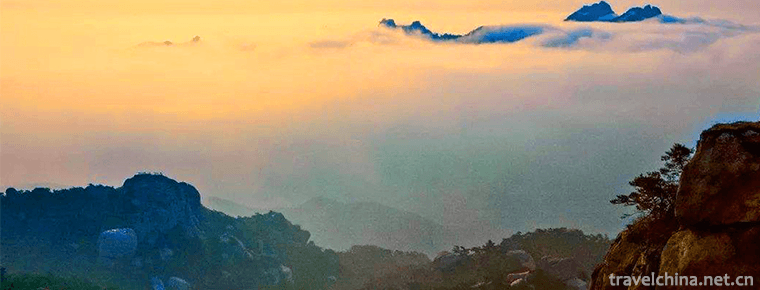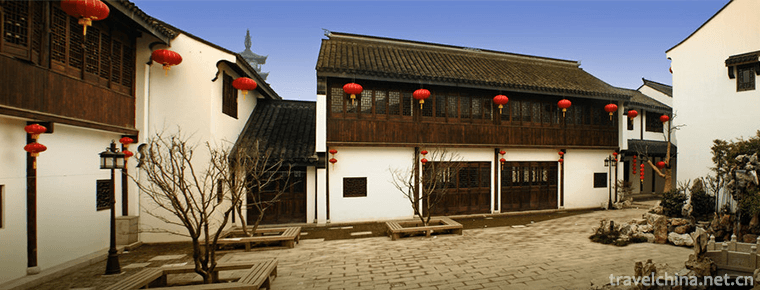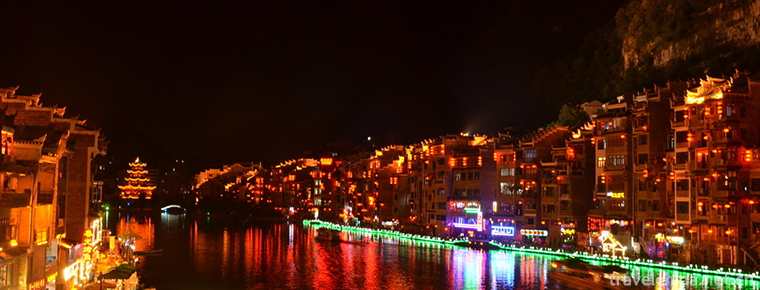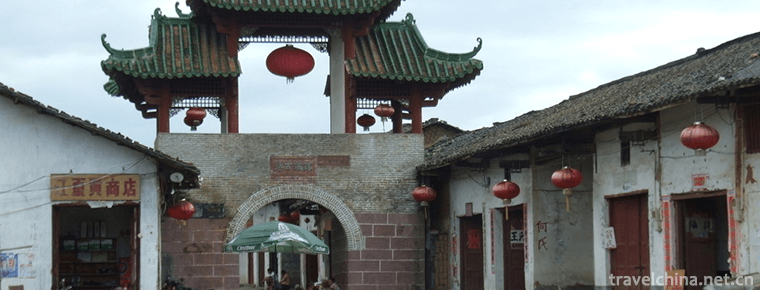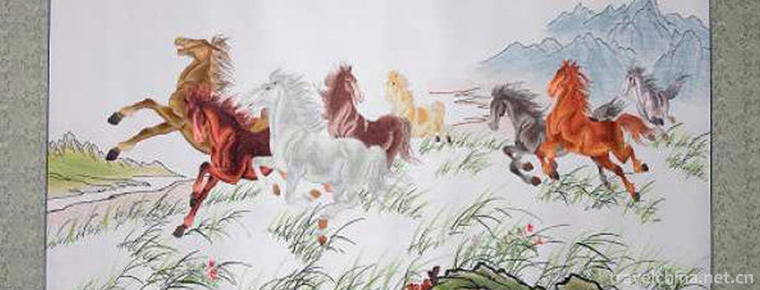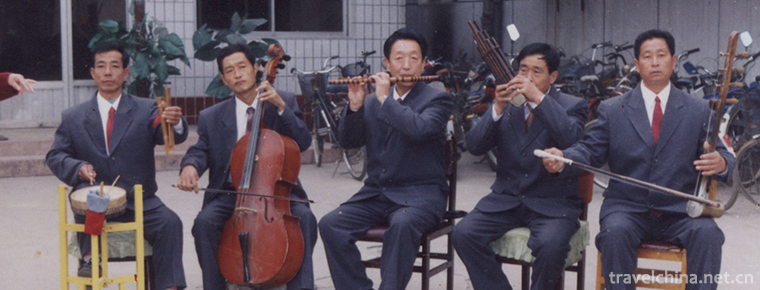Wild Elephant Valley in Xishuangbanna
Wild Elephant Valley in Xishuangbanna
The Wild Elephant Valley in Xishuangbanna is located in Mengzi Nature Reserve and "UNESCO Man and Biosphere Reserve" of Xishuangbanna National Nature Reserve, 22 kilometers away from Jinghong City. It is the first national park with the theme of animal protection and environmental protection in China.
According to archaeological discoveries, Asian elephants were widely distributed in the Yangtze River Basin, Liangguang and Guizhou areas, and even in the north to the Yellow River Basin. Asian elephants have been forced to migrate southward as the climate and geographical conditions deteriorate. At present, Xishuangbanna is the only habitat for Asian elephants in China. The Wild Elephant Valley, located at the junction of the eastern and western parts of Mengyang Nature Reserve, is the central channel for the exchange and convergence of wild Asian elephants living in the two areas. Wild Elephant Valley is the only place in China that can communicate with Asian wild elephants at close range through a number of sightseeing projects, such as high-altitude observation trestle, rainforest sightseeing ropeway, Asian elephant museum, Asian elephant provenance breeding base, Asian elephant performance school and so on. The bridge of communication between Asian wild elephants.
Wild Elephant Valley is rich in natural resources. It is a comprehensive eco-tourism scenic spot which integrates eco-tourism, popular science teaching and leisure vacation. It is a collection of tropical rainforest, south subtropical evergreen broad-leaved forest and many rare animal and plant populations. He was awarded the first batch of "National Ecotourism Demonstration Zone" and "China's 50 Most Worthy Places for Foreigners" Gold Awards and other honorary titles. At the same time, Wild Elephant Valley also undertakes many ecological protection research projects, such as "National Science Popularization Education Base", "Yunnan Asian Elephant Provenance Breeding Base of China" (the cooperation project between Xishuangbanna National Nature Reserve Administration and WWF), and the Wild Butterfly Breeding and Reproduction Research Base of Xishuangbanna.
brief introduction
In the scenic area, the gullies and rivers are vertically and horizontally covered with dense forests and a tropical rainforest landscape, where protected animals such as Asian wild elephants, bison, green peacocks and rhesus monkeys live. Because the scenic spot is located at the junction of the eastern and western parts of Mengyang Nature Reserve, it naturally becomes a passageway for all kinds of animals. Wild elephants come to Xishuangbanna frequently and become a few places where wild elephants can be seen. Since 1990, a forest park with wild elephants and tropical rain forest as its main contents has been built. Since its opening to the outside world in 1996, it has built such facilities as elevation corridors, tree hotels, high-altitude cableways, walking walkways, artificial butterfly farming gardens and cage bird gardens, which are among the best tourist attractions in Xishuangbanna. Wild Elephant Valley has the first elephant training school in China. Visitors can watch elephant performance. In addition, there are about 50 groups of wild elephants, 300-350 or so. On an average of 4.4 days, a group of wild elephants appeared, walked, bathed and played. Visitors can also observe the presence of elephants at night through infrared night vision mirrors. The best time to watch wild elephants is evening, night and morning.
To see wild elephants in Asia in China, we must go to Xishuangbanna, Xishuangbanna and Wild Elephant Valley. From rapids to still waters, from soil to surface, from grasses to shrubs, from understory to canopy, are habitats for animals, and this land is their home. Xishuangbanna, known as the "Elephant Country" in ancient times, can still see elephant figures: elephant trees, ivory trees, elephant trunk trees, as well as brocades, elephant crafts, elephant murals, elephant sculptures, even the God "Palm Moon Langwan", myths about elephants, legends about elephants...
Introduction to geography
The Wild Elephant Valley is located on the west side of National Highway 213. The wild elephants in Xishuangbanna mainly live in Mengyang Nature Reserve. In the main scenic area of Yexianggu Valley, elevated corridors, Tree Hotels and forest bars have been built for tourists to watch the activities of wild elephants.
There are nearly 300 Asian elephants and 16 domesticated elephants (including performing elephants) in the tropical rain forest of Mengyang Nature Reserve, which is the first domesticated elephant performance school in China. Every morning from 11:00 to 12:00, and from 2:00 to 3:00 p.m. for tourists, there is no extra charge, and the fee for taking pictures with elephants varies from 10.20.30.50 yuan each time.
Wild Yearbook in China has become a tourist hotspot in Xishuangbanna because of its convenient transportation and unique tropical forest landscape, where tourists can not only see wild elephants, the unique tropical rainforest landscape, but also attract more and more people.
Banna Wild Elephant Valley
Located in the southern margin of Mengyang Nature Reserve, it is situated on the west side of 684 - 685 kilometers of Kunluo Highway, 35 kilometers away from Jinghong, the prefecture government. Xishuangbanna is one of the most fascinating forest parks and scenic spots for wild sightseeing activities. Because the rivers here are divided into three forks, it is also called Sanchahe Forest Park.
Sanchahe Nature Reserve is famous for its unique tropical virgin forest landscape and a large number of wild Asian elephants (about 130). The Park was originally located in an elephant pond where wild elephants often haunt drinking water. Since the late 1980s, the relevant units of the National Nature Reserve have put salt on the riverside near the elephant pond. They have been seducing wild elephants for a long time. Groups of wild elephants have appeared on the riverside from time to time, and have gone to the elephant pond to drink water and lick artificial salt. Therefore, since 1991, the National Nature Reserve Xishuangbanna Nature Conservation Bureau has built an observatory and observation shed here to observe the scientific nature of wild elephants. Since 1993, Sanchahe Forest Park has been listed as an important tourist attraction project in provinces and states for development and construction.
Geographical characteristics
Sanchahe Nature Reserve is famous for its unique tropical virgin forest landscape and a large number of wild Asian elephants (about 130). The Park was originally located in an elephant pond where wild elephants often haunt drinking water. Since the late 1980s, the relevant units of the National Nature Reserve have been throwing salt on the riverside near the elephant pond for a long time, attracting wild elephants. Groups of wild elephants have appeared on the riverside from time to time.
Located in the south of Mengyang Nature Reserve, Sancha River, north of Mengyang Town in Jinghong City, about 50 kilometers from Jinghong City, the prefecture capital, with convenient transportation, is the most fascinating Forest Park and scenic spot for sightseeing activities in Xishuangbanna. Wild Elephant Valley is named for its frequent occurrence. Since there are wild elephants, there is no need to elaborate on the natural forest resources here.
Features of scenic spots
Wild elephants in China, the Wild Elephant Valley in Xishuangbanna, are the places where wild elephant activities are most concentrated and frequent. There, tourists may see wild elephants with their own eyes. Of course, such opportunities are not too many, mainly depending on whether they are lucky enough to catch up with wild elephants. And the unique tropical rainforest landscape has attracted more and more people. In addition, the scenic area can also watch performances with rich national flavor.
In 1990, we began to invest in the construction of forest parks with wild elephants and tropical rain forests as the main contents. In 1996, domestic and foreign tourists were officially opened to the public. The valleys in the region are vertically and horizontally covered with dense forests and a tropical rainforest landscape. There are rare animals such as Asian wild elephants, bison, green peacocks, macaques and so on. Because the scenic spot is located in the junction of Mengyang Nature Conservation Area and East-West Area, it has dense forests and a large number of birds and animals. It is a passage for all kinds of animal parades. The wild elephants in Xishuangbanna are more frequent and become the only place where wild elephants can be appreciated. In this forest park, there are animal viewing areas, primitive forest exploration areas and reception centers, with a total area of about 3.7 million square meters, of which the building area is more than 2800 square meters and the water surface is 8,000 square meters. At present, the continuation project is being carried out, with 2936 meters of observation elevated corridor, 1886 meters of high-altitude cableway and 3380 meters of new pedestrian walkway.
Visitors to the Wild Elephant Valley can watch the elephant performances trained during the day, and at night they can see the true wild elephant grace from the forest to this place to look for food. Sometimes, before dark, wild elephants swagger around the elevated corridor, watching tourists stop for a moment and look at these "uninvited visitors" for a few eyes. Sometimes groups of wild elephants appear in the valley at the same time, and the roar of the elephants driving each other up and down makes the newly arrived distant visitors tremble. Some elephants are not alarmed, and they still look for food leisurely in front of tourists. In addition, here you can also see all kinds of snakes in the snake garden and taste the "Longfeng soup" cooked with snakes and black chickens. At the same time, you can also go to the butterfly farm to watch the colorful butterflies and buy the handicraft made with butterflies. But you must not be confused by these man-made landscapes. The real natural scenery is hidden in the primitive forest. When you walk into the forest, you can only see the clear stream flowing slowly and the trees growing densely by the stream. Here you can see plants strangling, plant roots and old stems and flowers, and many rare plants, so that you can enjoy the tropical rainforest landscape.
Scenic spots focus
Wild Elephant Valley is full of mystery and wonder. Its beautiful natural scenery and exciting exploration activities will surely make you happy and unforgettable all your life, and make you return to nature.
The pedestrian trail for exploring tourism flows downstream along the South Bank of Qingxi, which runs among the forests. It enters the central area of the park, then returns to the reception center from the trail in the forest on the other side, or into the snake garden and butterfly farming garden and returns to the front avenue of the park. This 4880-meter-long walking guide will pass through Valley rain forest area, mountain monsoon forest area and subtropical monsoon evergreen broad-leaved forest area, along which you can enjoy many valuable plants in orchid garden and tropical rain forest. Wild Elephant Valley is located at the edge of Mengyang Nature Reserve in the north of Jinghong County. Where the wild elephant valley is located, there used to be an "elephant pond" where the wild elephant often haunts and drinks water. In order to exploit and utilize this resource, since 1988, the management departments of nature reserves have regularly put salt in this area, planted wild elephants'favorite food, and seduced wild elephants for a long time, so there are more and more wild elephants here.
Wild elephants can be seen everywhere in the forest beside the walkway. Lucky tourists may still see wild elephants roaming in the woods in the evening or at dawn. In the Wild Elephant Valley, visitors can watch elephant performance. There are 16 domesticated elephants. This is the first elephant training school in China. These trained giants bow to the tourists, welcome them, stand upside down with their heads and feet facing the sky, dance with the melody of music, cross a wooden bridge and perform with elephant trunk as "kicking" balls. Tourists can ride on elephant backs or sit on elephant trunks, take pictures with elephants, even lie on the ground and let elephants massage you with their feet... They are so clever that you have to shoot them.
Ticket Price of Wild Elephant Valley in Xishuangbanna: 65 yuan per person, 50 yuan per person
One-way 50 yuan round trip 70 yuan for Yexianggu ropeway
Address: West of 213 National Highway
Celebrity gathering
On March 4, 2015, Prince William visited the Dai village in Dadugang Township, Xishuangbanna, and fed elephants at the Asian Elephant Breeding Base.
Traffic routes
Traffic: Take the bus to Guanping at Jinghong Passenger Station, and let the driver stop at Sancha River Nova Elephant Valley. The fare is 15 yuan. Starting from Simao, you can take a bus to Jinghong and Mengla. Tell the driver to stop at the back door of the Wild Elephant Valley, where he can walk less. Ticket: 65 yuan. Tropical Rainforest Sightseeing Cableway, one-way fare 50 yuan, about 35 minutes, round trip needs 70 yuan.
Pictures From: http://bbs.fengniao.com/forum/10493965.html














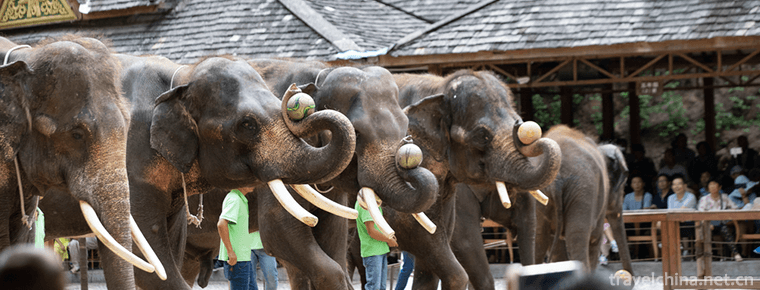
-
Mount Huangshan
Huangshan: World Cultural and Natural Heritage, World Geopark, National AAAAA Class Scenic Spot, National Scenic Spot, National Civilized Scenic Spot Demonstration Site, Top Ten Famous Mountains....
Views: 235 Time 2018-10-28 -
Xian City Wall Scenic Area
Xi'an City Wall Scenic Area and National AAAAA Tourist Scenic Area are the four-in-one Scenic Area around the city with the theme of the ancient city wall of Xi'an, including the moat.
Views: 136 Time 2018-12-12 -
Wulian Mountain Scenic Area
Wulian Mountain Scenic Area covers a total area of 68 square kilometers and is a national AAAA-level tourist area. It is composed of Wulian Mountain and Jiuxian Mountain.
Views: 153 Time 2018-12-22 -
Zhou Qiao old street
Zhouqiao Old Street is a national AAAA tourist attraction. The old street of Ximen in Jiading is located on the west side of Bole Square in downtown Jiading.
Views: 165 Time 2019-01-21 -
Libo Karst
Maolan National Karst Forest Nature Reserve, located in the southern suburb of Libo County, is a well-preserved natural forest vegetation in the karst landform of the central .
Views: 156 Time 2019-01-29 -
Pearl Lane
Zhuji Lane, located in Zhuji Village, Zhuji Town, Nanxiong City, Guangdong Province, covers an area of about 3 square kilometers. Zhuji Ancient Lane is one of the national 4A scenic spots and one of t.
Views: 233 Time 2019-03-20 -
Burning Techniques of Linqing Gong Bricks
Linqing fired tribute brick is an ancient handicraft. Beginning in the early Ming Dynasty, Yongle's firing technology is the unique experience accumulated by the working people in Linqing of Shandong .
Views: 95 Time 2019-05-13 -
Wenzhou embroidery
Ou embroidery, also known as painting curtain, is a local traditional art in Wenzhou, Zhejiang Province. It is produced in Oujiang area. It is also one of the special handicraft products of "thre.
Views: 155 Time 2019-06-08 -
Four strands
Four-strand string, also known as four-strand string, two-strand string, five-tune string and five-tune tune tune tune, is one of the ancient traditional local operas in China. It originates from Julu.
Views: 388 Time 2019-06-16 -
Bao Shu Ya
Bao Shuya (the first 723 years or the first 716 years - the first 644 years). Si Surname, abalone His name is a famous uncle. Yingshang (now belongs to Anhui (person) the Spring and Autumn period Qi S.
Views: 168 Time 2019-09-11 -
Guiyuanlin Zhangba Luzhou
Longan forest in Zhangba, Luzhou is a genetic Bank of Longan Germplasm in inland China. As the most concentrated longan plantation with a history of more than 100 years, it is as valuable as giant panda in zoology..
Views: 177 Time 2020-10-16 -
Cuiping Mountain Park
Cuipingshan Park, located in the northwest of Yibin City, Sichuan Province, is a famous urban forest park integrating scenic spots and forest scenery. It is mainly composed of Cuiping mountain and Zhenwu mountain. .
Views: 135 Time 2020-10-16
